Kia Syros vs Kia Sonet Comparison Review
With the arrival of the Syros, Kia seems to have put one of its own under threat. Is that really the case, or can the Sonet hold its own?
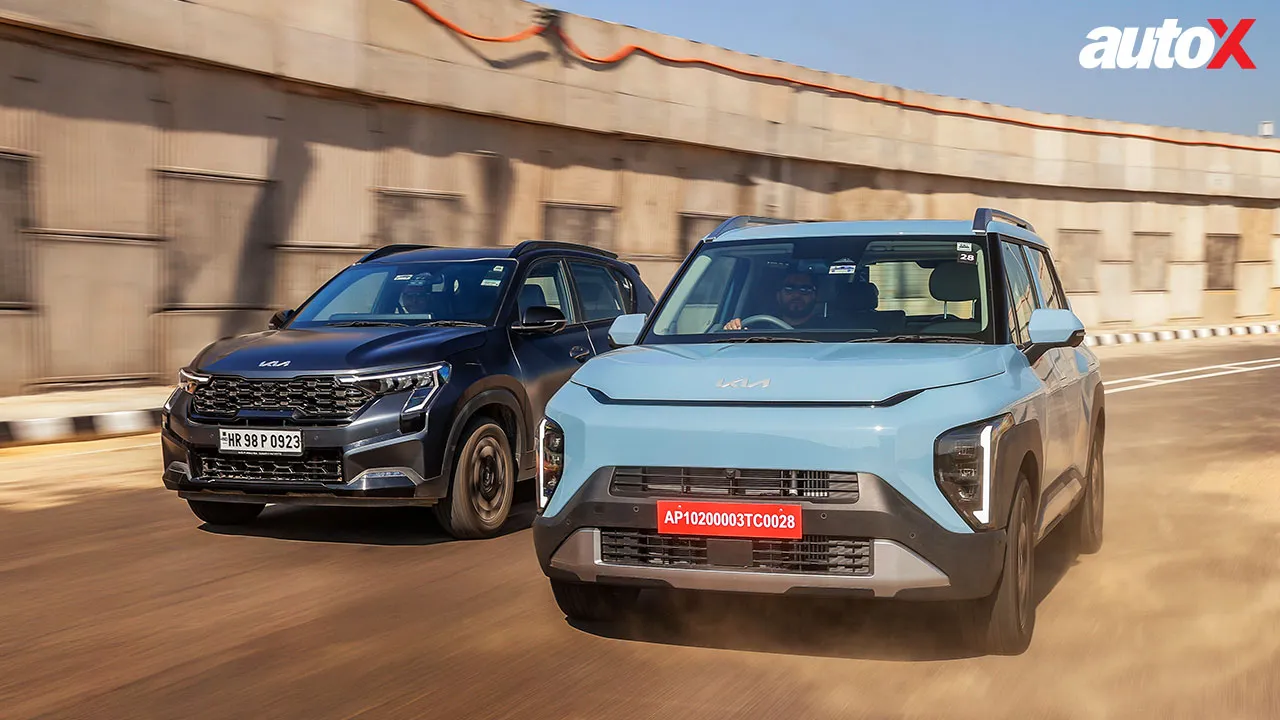
On paper, the Kia Syros and Sonet seem to be two peas in a pod. You see, they are cut from the same cloth – they are both sub-4 metre vehicles, powered by the same set of petrol and diesel engines, with prices that are strikingly close. Yet Kia claims that these siblings are poles apart, each designed for distinctly different sets of buyers. Is it really the case, or is it just a clever marketing spin to lure more customers into the Kia fold? Well, there is only one way to find out – a head-to-head comparison test.
Different Folks, Different Strokes
At 3,995mm, the Syros and Sonet are identical in length – but that’s where the similarities end in terms of dimensions. The Syros is not only taller (1,680mm vs 1,642mm) and wider (1,805mm vs 1,790mm) but also has a 50mm longer wheelbase (2,550mm vs 2,500mm). That said, you don’t need a ruler to see the differences between the two, for their outer appearances make it quite evident. The Syros is a classic case of form following function. It has a tall-boy design, an upright windshield, a large glass area, and short overhangs. People with keen eyes will also notice its shorter bonnet compared to that of the Sonet. The Syros’ boxy MPV-esque design comes across as oddball at first, but I personally feel that its quirky design works in its favour. With its EV9-inspired front fascia, ice-cube split-headlamps, large 17-inch alloy wheels (on top-spec versions), flush door handles, and a stubby rear end, the Syros exudes a funky charm that makes it stand apart.
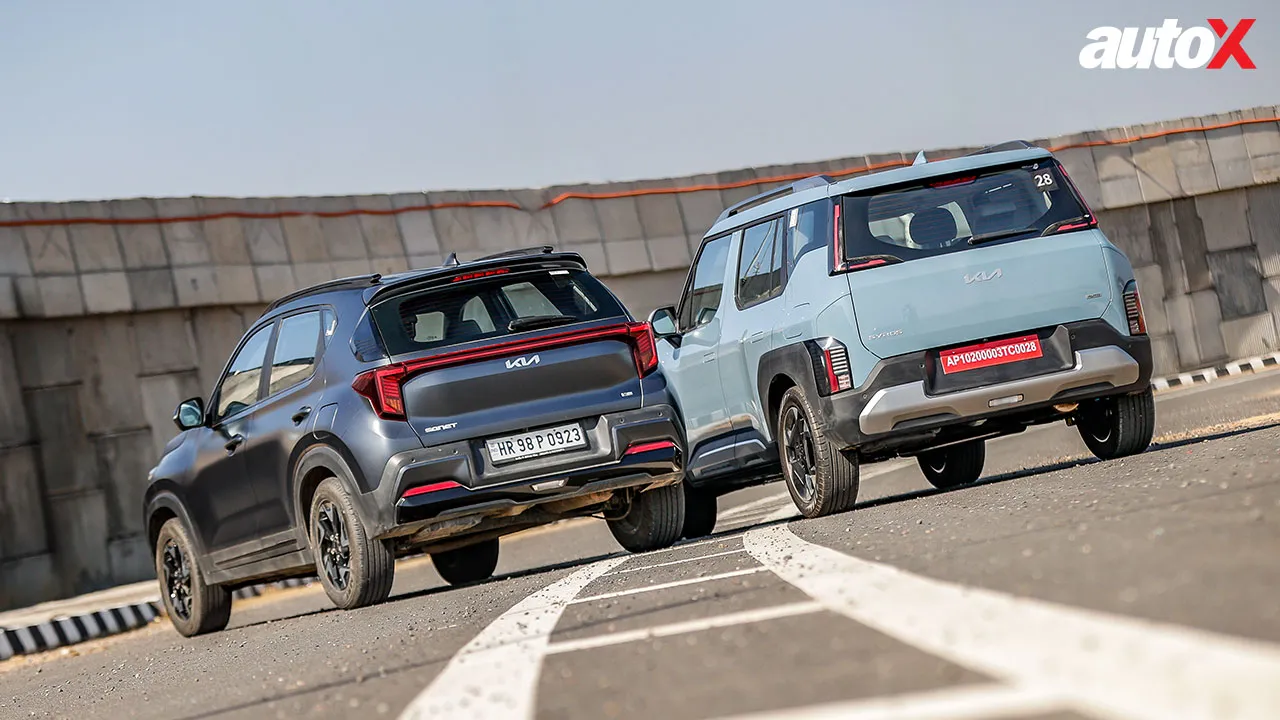
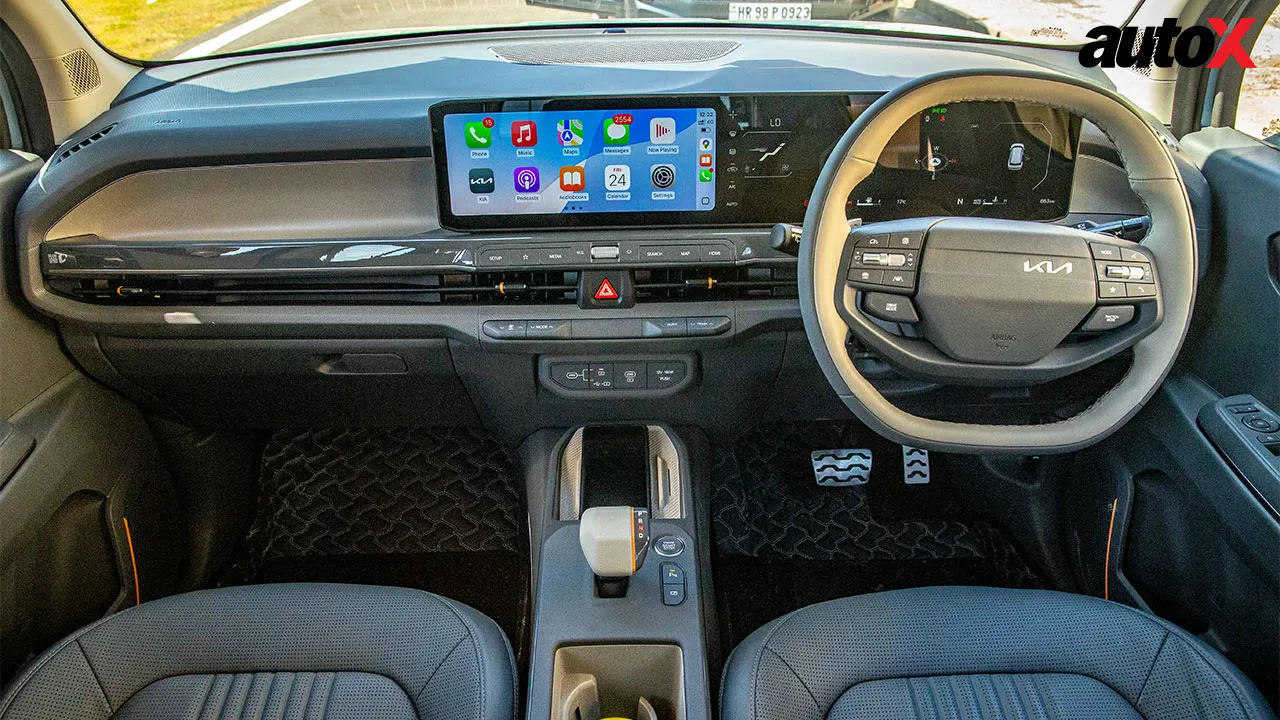
The Sonet, on the other hand, is a real looker. Its aggressive styling – featuring a tiger-nose grille, jaw-shaped LED headlamps, and an overall cohesive and muscular design – makes it unmistakably imposing. Even though the Syros is the wider of the two, it’s the Sonet that looks bigger from the front and commands more attention. It’s fair to say that the Sonet has a more pronounced SUV presence than the Syros. All in all, in terms of aesthetics, the Sonet’s aggressive styling is likely to appeal to a larger audience than the Syros’s quirky design.
Generation Gap
It is when you step inside the Syros that you realise that it has redefined the game for compact SUVs and how! The interior is the Syros’ party piece, and it’s clearly a level above the Sonet’s in all the departments. What’s more, it’s a completely new design, and the cabin is kitted out with big screens, segment-first creature comforts, and new-age gadgets, along with a heck of a lot of space. The main highlight here is its 30-inch ‘Trinity’ display, which seamlessly integrates a 12.3-inch infotainment touchscreen, a 5-inch touchscreen for temperature controls, and a 12.3-inch digital driver display. Not only does this large slab of screen offer superior touch response and display quality than the Sonet’s 10.25-inch touchscreen, but it also comes with wireless connectivity for Android Auto and Apple Carplay – a feature missing in the top-spec versions of the Sonet. It’s fair to conclude that the technology in the Syros is a generation ahead of the Sonet.
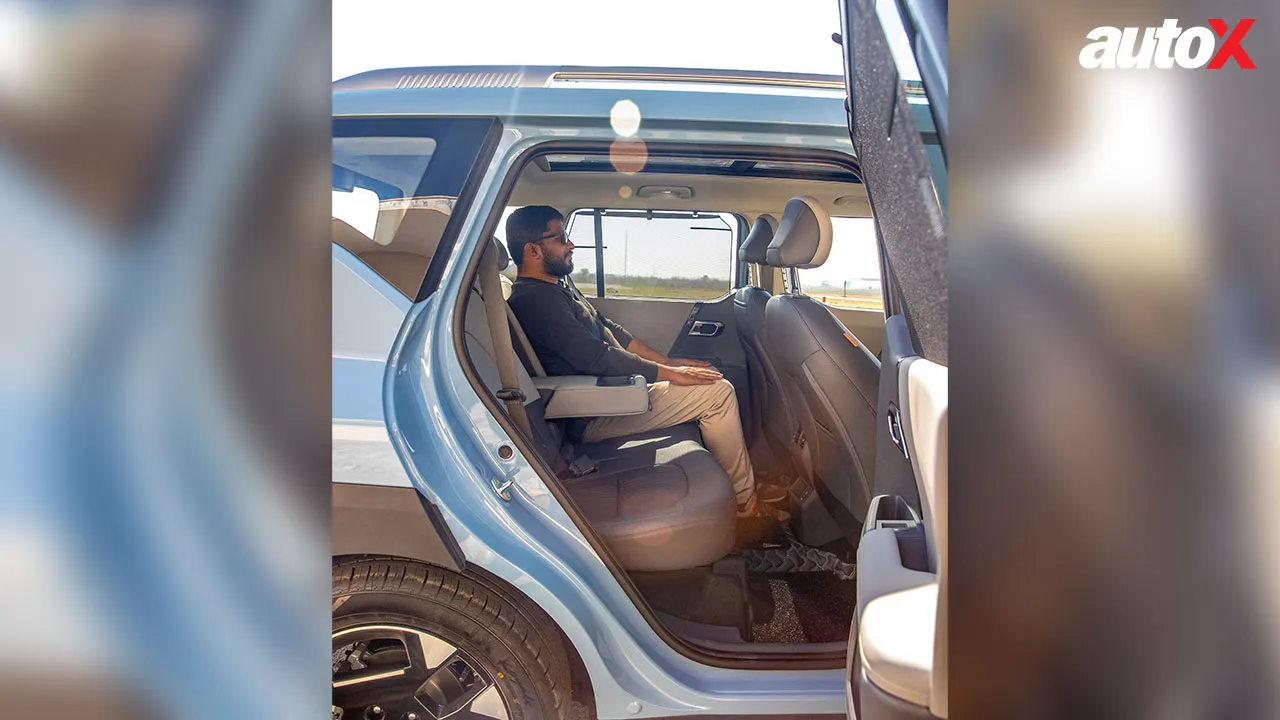
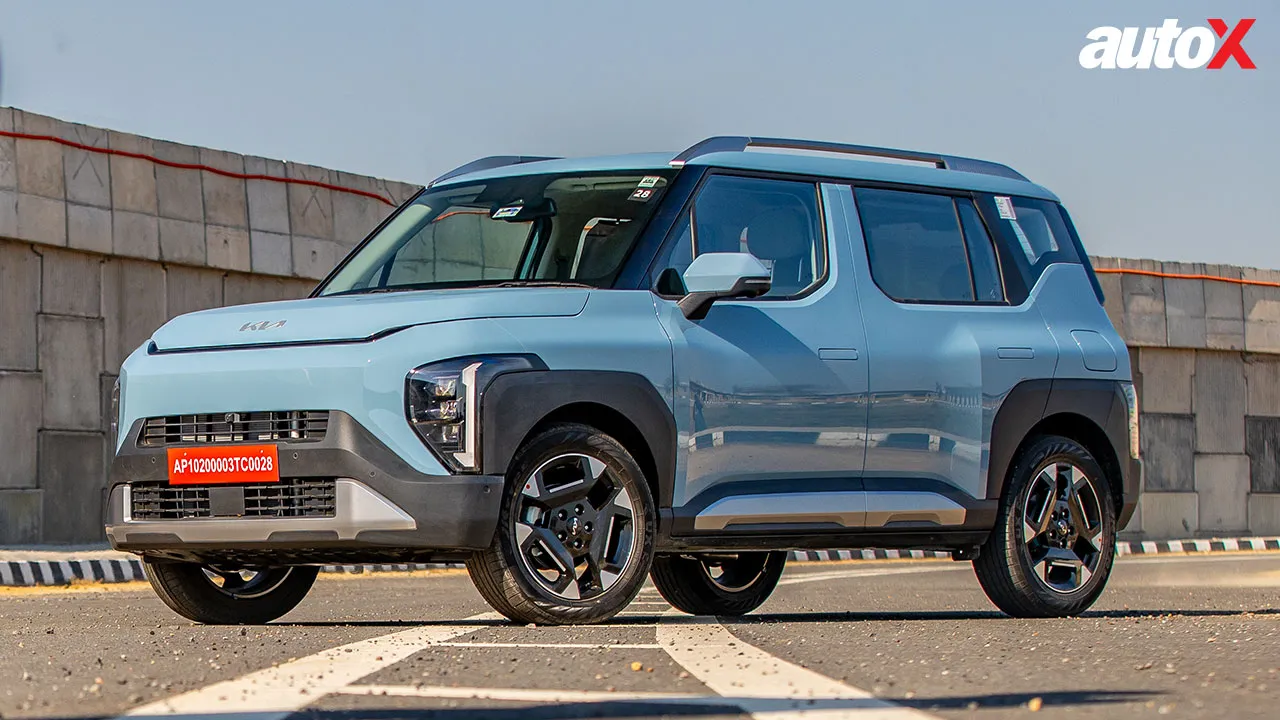
However, there’s no denying that some might feel that the sheer number of features in the Syros borders on overkill. The chunky twin-spoke ‘squircle’ steering wheel – which looks good and is great to hold – but with one too many buttons can take some time to get used to. Additionally, the middle screen for AC controls is a bit fidgety to use and can be distracting because of its placement. Thankfully, there are big quick-access buttons on the lower part of the dash for climate controls.
Among other highlights, the Syros comes with four interior colour / upholstery options – the top-end version has a light grey theme with orange accents. Be it the quality of stitching or the general fit and finish of the cabin, the Syros feels a level above the Sonet. Both SUVs get front ventilated seats, a 360-degree camera, and an electrically adjustable driver’s seat, but again the Syros offers a lot of extra niceties, including an electric parking brake, Level 2 ADAS (vs Level 1 in the Sonet), and a dual-pane panoramic sunroof. Plus, thanks to Kia Connect 2.0, the Syros is also capable of receiving OTA updates, along with an onboard diagnostics tool.
Backbenchers’ Delight
Experience the rear seats of the Syros and Sonet back-to-back, and it won’t take a genius to notice that the newcomer has a distinct advantage over the older model. While the Sonet’s rear bench is tight, cramped, and claustrophobic like a studio apartment, the Syros’s rear seats feel like a penthouse! Thanks to the extra 50mm in its wheelbase and clever space management, the Syros not only has substantially more legroom than the Sonet but can also give its bigger bro Seltos a run for its money in this regard. Not to mention, given its tall-boy design, you get acres of headroom, and the large windows and panoramic sunroof give the cabin an airier feel compared to the dark-themed interior of the Sonet Xline. The Sonet does get two USB Type-C ports, a smart air purifier, and window blinds just like the Syros, though.
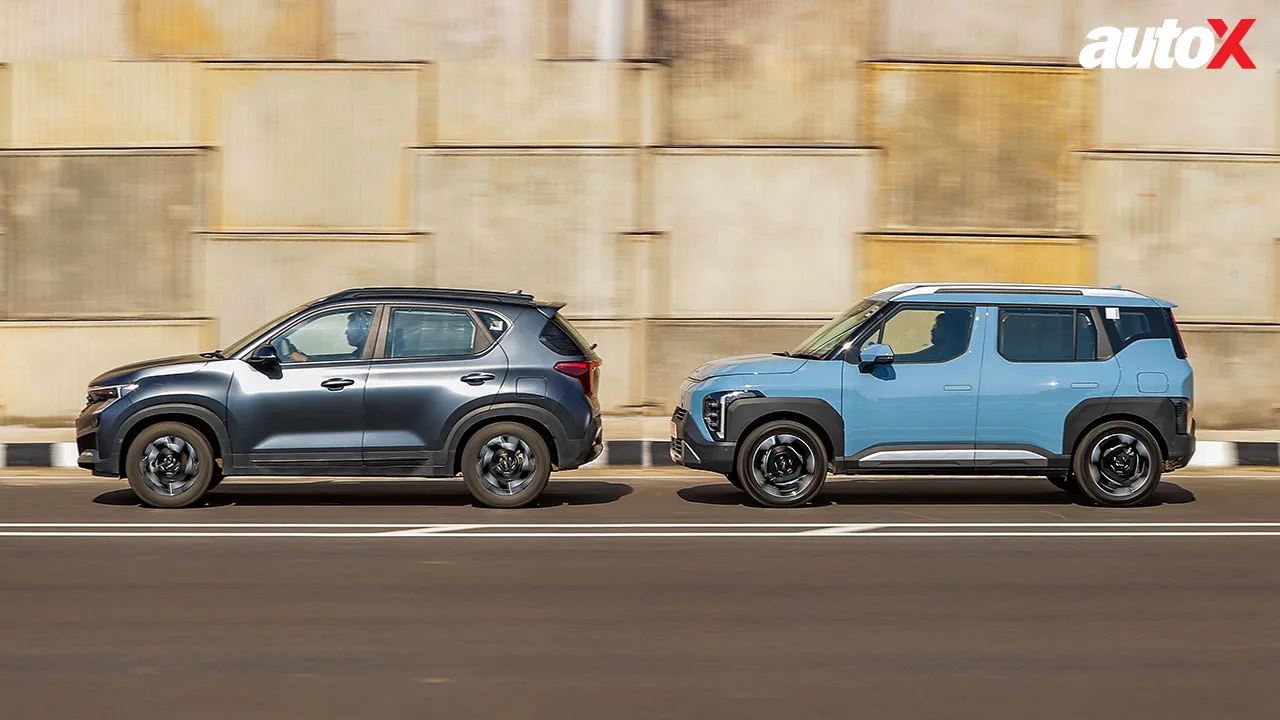
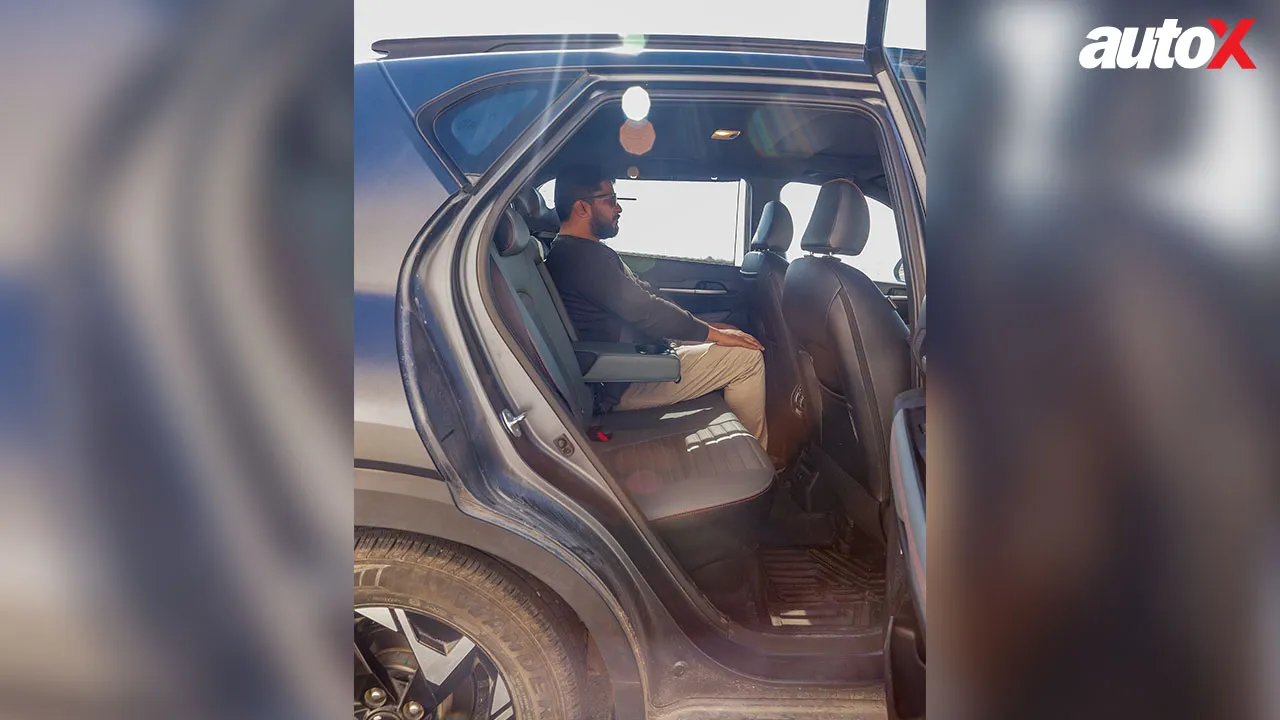
The Syros, on the other hand, has another ace up its sleeve in terms of making life comfortable for rear occupants – its rear seats can recline and slide forward and backwards, and they also get ventilation, but it’s only available on the base and not the seat-back. Another area where the Syros has an edge over its sibling is in terms of boot space – 465 litres vs 385 litres. The catch here is that the full 465 litres are available only when the rear seats are in the forward-most position, otherwise, the boot space drops to 390 litres.
Two Peas in a Pod
The Sonet is offered with three engine options – a 1.2-litre, four-cylinder, naturally-aspirated petrol, a 1.0-litre three-cylinder, turbo-petrol, and a 1.5-litre four-cylinder, diesel engine. Barring the 1.2-litre petrol engine, the Syros shares the other two powertrains with the Sonet. While the Syros’ diesel version gets the same 6-speed auto and 6-speed manual as the Sonet, its turbo petrol version gets a 6-speed manual transmission, along with a 7-speed DCT instead of a 5-speed iMT (clutch-less manual). Now, my guess is that Kia has done this to price the lower variant of the Syros competitively vis-à-vis the Sonet. That said, on this occasion, we compared the diesel AT versions of both.

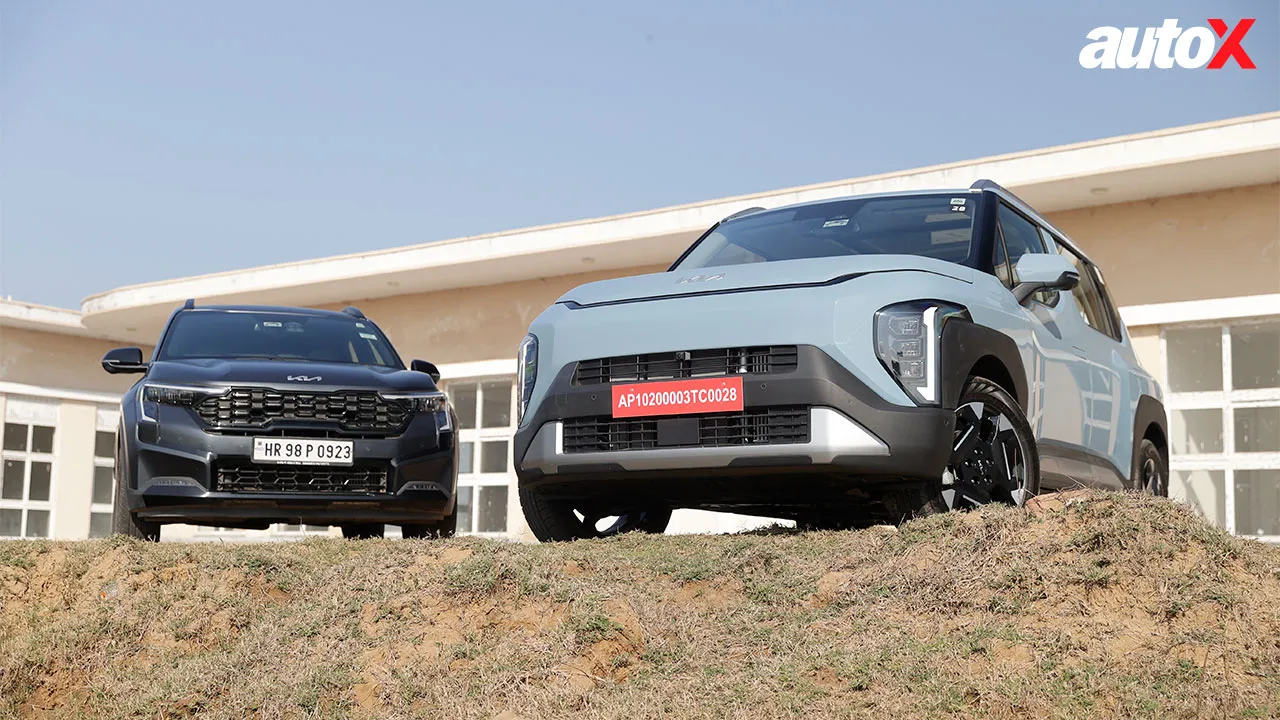
The 1.5-litre diesel mill has proven its mettle in the Sonet, Seltos, Hyundai Venue, and Creta over the years, and it performs just as capably in its latest application. The oil burner offers stellar driveability and offers strong and flexible performance in all driving conditions. The diesel engine has oodles of torque at low and mid rpm, and thanks to the shorter gear ratios of the automatic transmission, this drivetrain masks its turbo lag quite well. In daily driving, it’s seamless and easygoing, and the grunt this engine offers is thoroughly enjoyable.
That said, being a diesel, this engine does feel a bit flat at higher revs – 4,000rpm and above – and also tends to get noisy and laborious. Not to mention, during cold starts, you hear typical diesel clatter in both vehicles. However, we found the NVH levels to be on the higher side in the Sonet as compared to the Syros – both at idle and on the move. So, while there’s hardly any difference in terms of performance and even fuel efficiency between the two vehicles, the Syros definitely has an edge in terms of cabin refinement and noise insulation.

In terms of ride and handling, the Syros and Sonet are markedly different. While the Sonet’s ride is firm and crashy almost all the time, the Syros feels more absorbent and mature in the way it handles bad and broken roads. That said, it’s not exactly plush or soft – it’s got a firm edge as well – something that’s quite evident at low speeds.
The Sonet, however, is clearly the better- and sharper-handling compact SUV of the two. Its steering has more heft and offers more feedback than the Syros’ wheel, which is light and effortless and seems to be tuned for an easy-going driver instead of an enthusiast. That said, neither vehicle is meant to be hustled around corners, especially their nose-heavy diesel versions. Long story short, they both offer predictable and neutral handling without feeling sloppy.
Verdict
As it turns out, the Syros and Sonet are worlds apart indeed. Sure, they both compete in the same sub-4m SUV segment, but they have their own areas of expertise. For instance, the Syros seems to have been designed to address every possible deal-breaking issue that one could find in the Sonet or any other sub-4m compact SUV. As a result, it has more space, more creature comforts, and more practicality to offer. However, in its quest to become more complete, the Syros seems to have sacrificed some of the aggression typical of an SUV. And that’s that, really.
If you care about practicality and space more than anything else but don’t quite have the budget to consider the Seltos or Creta, the Syros makes for a compelling choice. On the other hand, if you’re young and hip and don’t have kids or ageing parents to haul around, the Sonet is likely to tickle your fancy much more. All in all, when you step into a Kia showroom for a compact SUV, you now have two polar opposite interpretations of the same concept – each meeting different needs. More than a family feud, this rivalry seems to be the case of keeping it all in the family.
----
It’s fair to say that the Sonet has a more pronounced SUV presence than the Syros
While the Sonet’s suspension feels firm all the time, the Syros’ ride quality is relatively more absorbent
Engine: 1,493cc, 4-cylinder
Transmission: 6-speed AT FWD
Power: 114bhp
Torque: 250Nm
Fuel: Diesel
Price: ₹17.80 Lakh Ex showroom
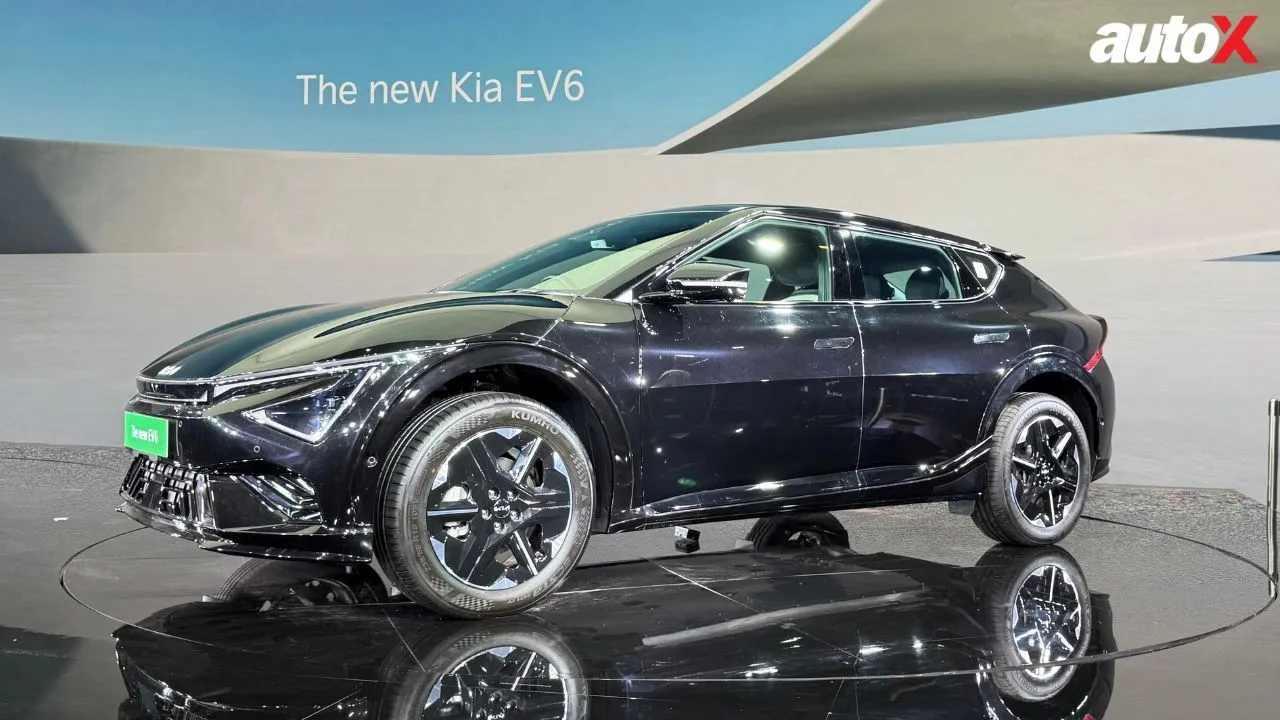
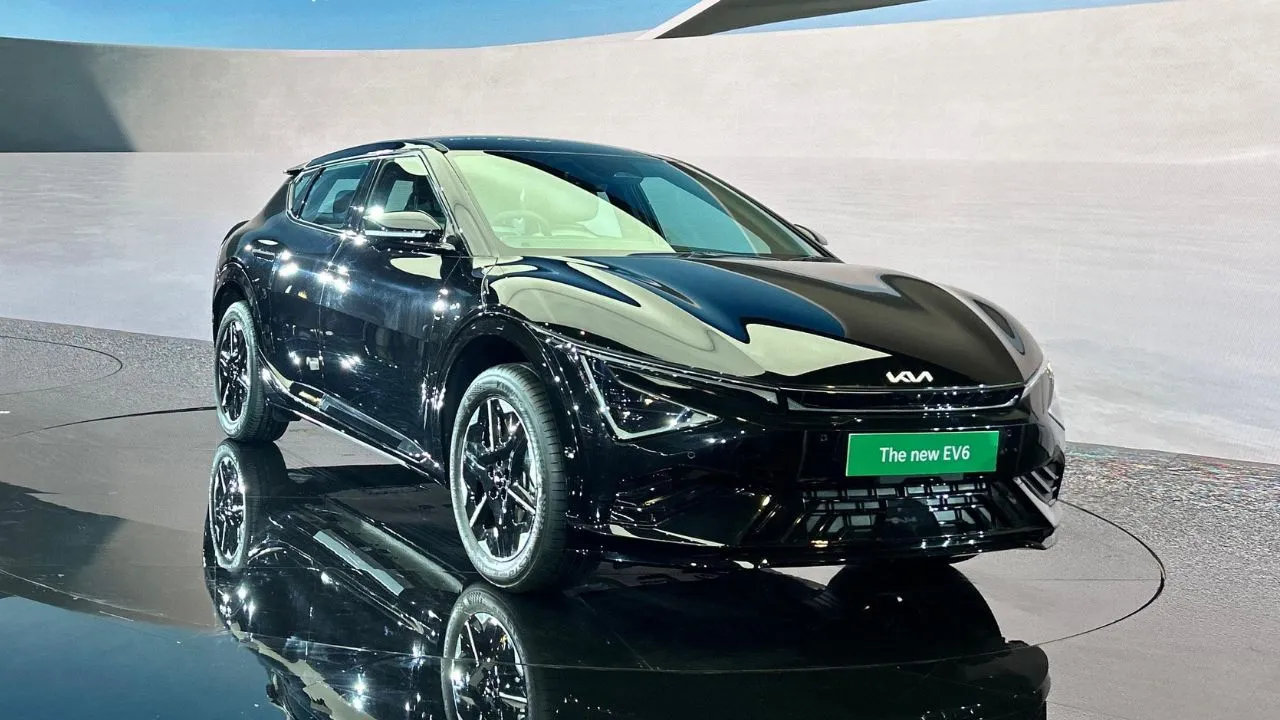

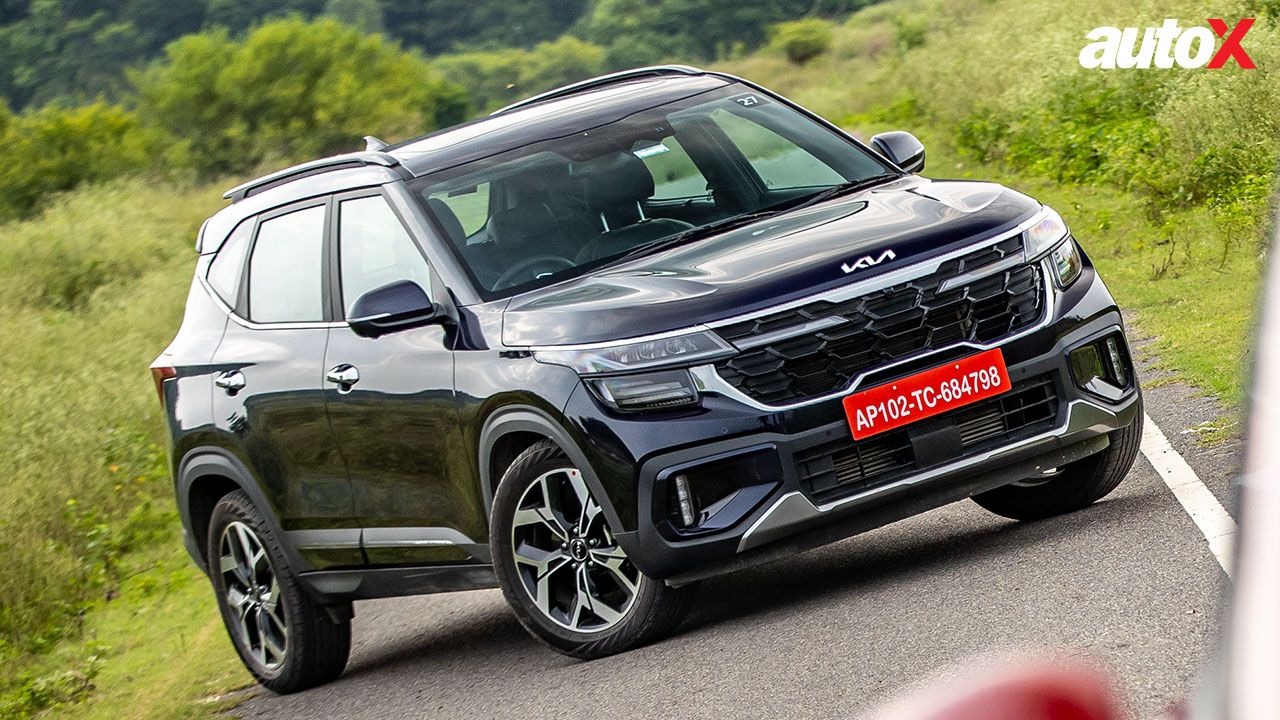
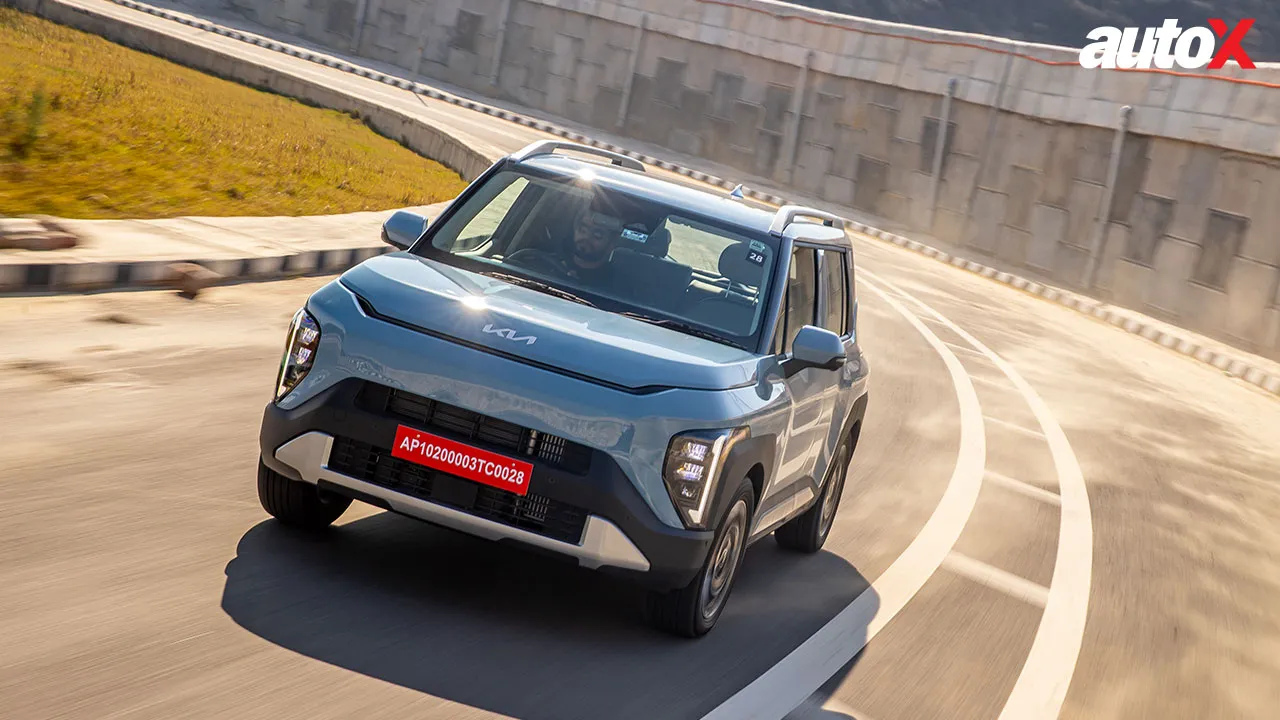

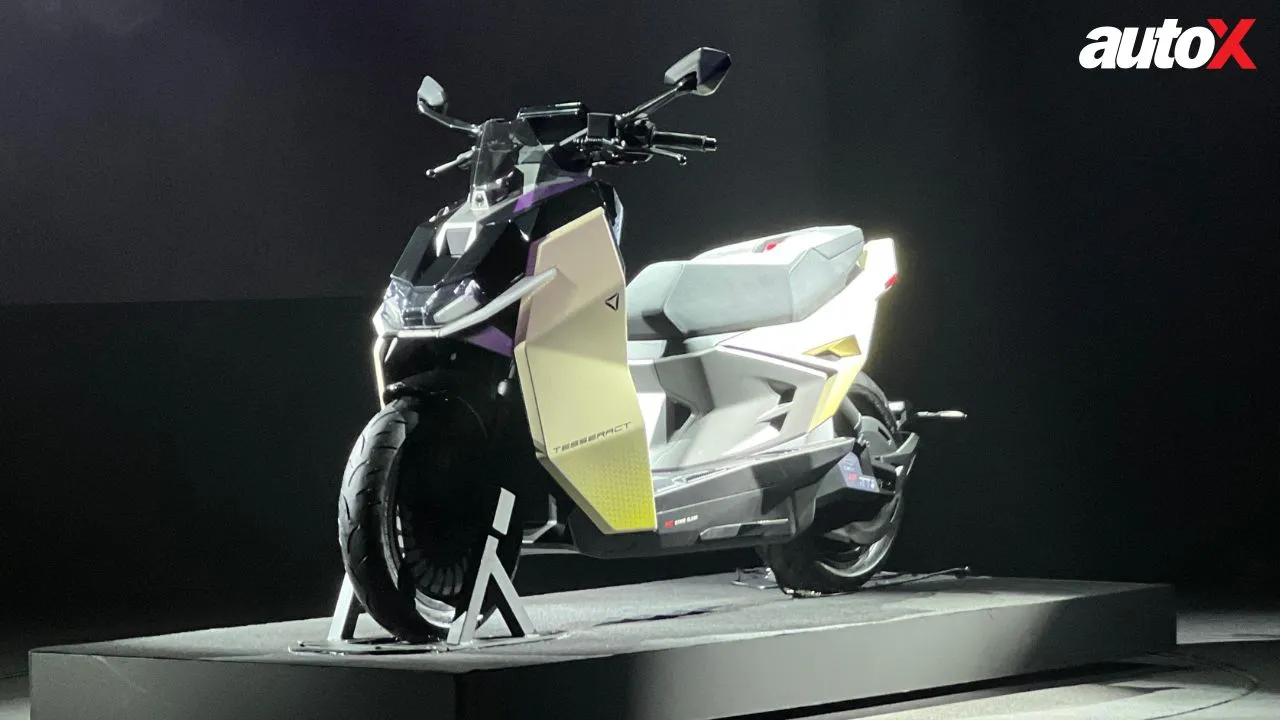
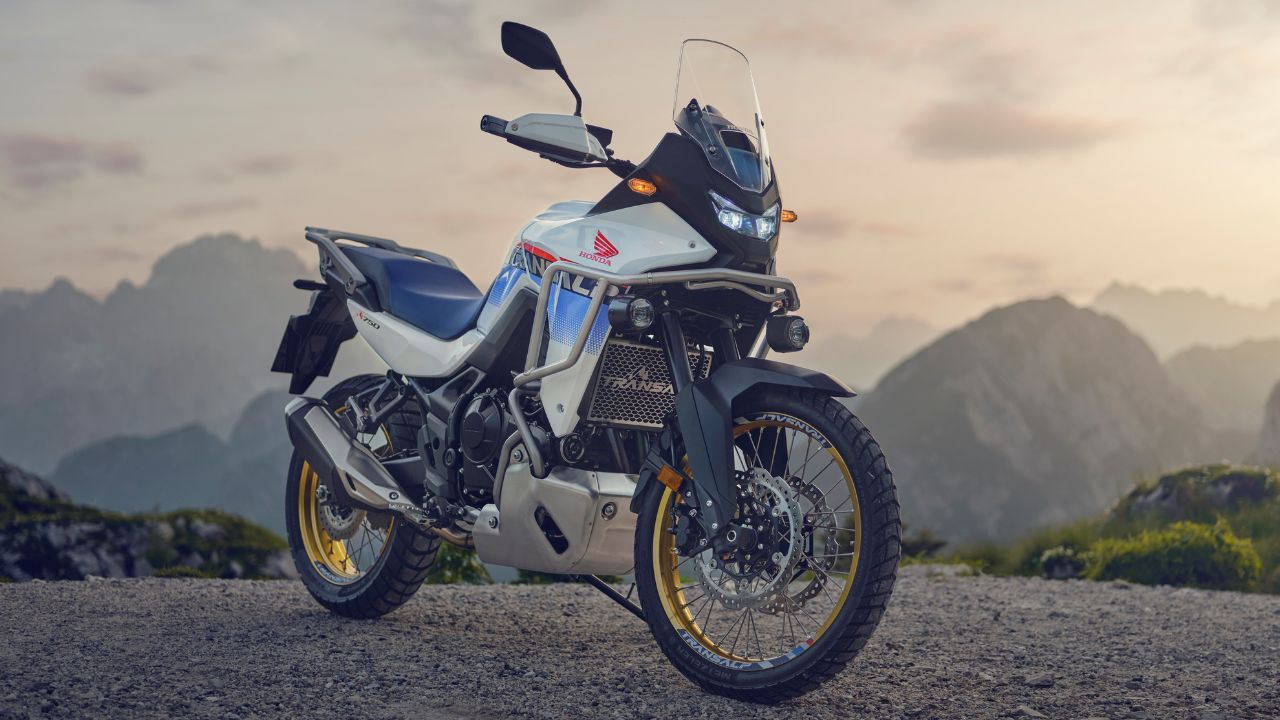


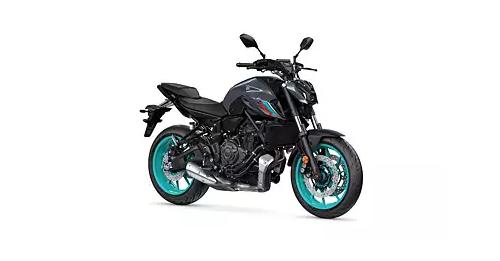
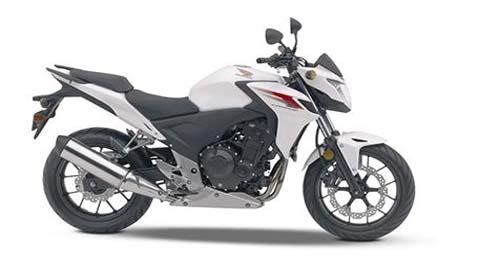
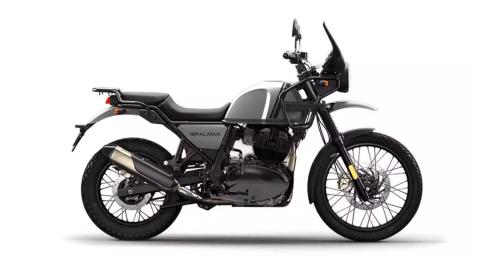
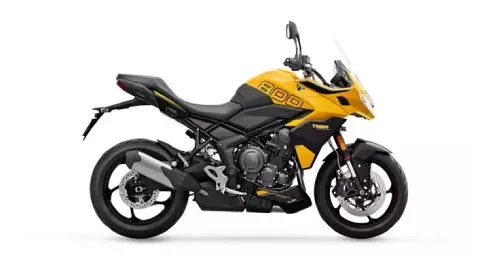









Write your Comment on